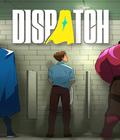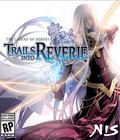The current plot of the Trails series spans nine full-length JRPGs released over multiple console generations and almost 20 years of real-world time. Everything was building up to a big climax, which occurred in Trails of Cold Steel IV. It's difficult to let go of a cast that you've spent that much time with, which is pretty much the reason for the existence of The Legend of Heroes: Trails into Reverie. It's one last chance to explore the world and characters that players have spent a lot of time with before the franchise moves on to the fresh beginning of the next game (titled Trails of the Dark in Japan). This is the "Avengers: Endgame" of RPGs. Does it manage to be what fans want? Yes and no.
Trails of Reverie opens not too long after the events of Trails of Cold Steel IV. At long last, the Zemurian Continent is at peace, and the heroes of the previous game have returned to their daily lives. Lloyd Bannings is a member of the SSS again and protecting Crossbell, while Rean Schwarzer is still a teacher at Thor's Military Academy. Unfortunately, the short-lived peace is shattered when Crossbell's independence ceremony is interrupted by the arrival of Rufus Albera. Former governor of Crossbell, Rufus is supposed to be in jail for his many crimes. Instead, he arrives with an unbelievably powerful army, defeats the SSS, and declares himself the new ruler. Our heroes must return to the fray and stop Crossbell from being conquered again.
The game is divided into three routes. One focuses on Lloyd and his attempts to liberate Crossbell, while the other focuses on Rean and his attempt to figure where Rufus and his men came from. The third route follows the mysterious masked man known as C, who is gathering a group to target Rufus and his new army. The game lets you swap between all three routes, but progress in one route is often blocked until you finish another.
Overall, the main plot exists as an excuse to revisit the cast and locals of the previous games in the series, sort of like an old-school reunion show. Where the game excels is in its smaller moments, when players revisit old cast members and see how they've grown or see the conclusion to long-running plots. There's an entire mechanic called Daydreams that allows you to see the adventures that characters had off-screen, and these will most appeal to Trails fans. My favorite was a simple combatless vignette that focused on the Phantom Thief B's distinct wedding gift to his long-time rival, Olivert.
Those are the moments that shine. The game is basically a big farewell party to the casts of some of the longest RPGs on the market, and it is best approached that way. The main plot is the wrapper around it. That means this isn't a game for newcomers, even by the standards of the Trails series. If you haven't played at least the Crossbell games and the Erebonia games, you'll spend a lot of time focusing on characters that you know nothing about. Even if you loved Cold Steel, you're going to spend so much time interacting with people from Zero/Azure that it would lessen the fun.
My biggest problem with Reverie's writing is the same one that I had with Trails of Cold Steel IV, though it's exacerbated in this offering. Bringing together the cast of multiple Falcom games and having them all hang out emphasizes how often the developer goes back to the same well for character concepts, execution, and unpleasant jokes. There are times that it feels like the meme of Spider-Man pointing at himself, only focused on weirdly bizarre archetypes like "former child assassin who escaped an organization but maintains their skills and weird moments of sadism." It's not the end of the world, b,ut when they go out of their way to lampshade, it makes the game feel small. It also continues to do the frustrating thing where your cast is comprised of super-talented geniuses who defeated the incarnate evil of an ancient god, but you still get treated like total losers who are weaker than NPCs, but at this point it's a Trails tradition.
Unfortunately, there's an overabundance of QA issues. One glaring issue with Trails of Reverie that overshadows almost everything else in the game is one of the most shoddy translations . While the actual text and script are largely fine, almost everything around it is a mess. There are an absurd number of mistranslated weapons, abilities and items. Fishing rewards have a second 0 added to the text (but not the reward). Terms from previous games are translated in different ways. Minigames don't function correctly.
Most of this would be annoying but ignorable, but there are several major bugs that significantly impact the game. Probably the most significant of these involves Link Skills. There are a significant number of characters who no longer have functioning Link skills. This is true for any character who wasn't playable in Trails of Cold Steel IV, even if they were playable in previous Cold Steel games. This means they end up being notably weaker than the rest of the cast. Considering this hits the entirety of C's new characters, that is a significant flaw.
The translation is so sloppy that it gets in the way of enjoying the rest of the game. I gravitated away from using new characters that I normally would simply because it feels crappy to know they are so heavily nerfed. It isn't that Trails into Reverie is impossibly hard without it, but you can feel the missing bonuses even on Normal mode, and I can only imagine that Abyss mode is a genuine frustration.
As far as the actual gameplay goes, it's almost identical to Trails of Cold Steel IV. The core mechanics and design are pretty much identical. I would argue that it picks up almost directly where Cold Steel IV left off. The early game doesn't ease you into things and assumes that you're familiar enough with the systems, so you only need a brief refresher. You even start with a party who is fully equipped and has access to end-game skills! I really like this element. After over four full-length JRPGs spent with these characters, it's nice to have it assume that I know what I'm doing and be willing to push me a little.
The United Front mechanic is the big change to combat. By using the Assault Gauge (usually used for preemptive attacks on enemies) during battle, you can have your entire party, including characters in support slots, launch either a Physical Attack, Magic Attack or Heal. These United Front attacks are extremely powerful and offer buffs and bonuses at the same time, as well as refilling the BP you use to cast Brave Orders. It's a neat feature and gives characters something to do when they're low on resources rather than wasting a turn with increasingly worthless basic attacks.
Also new to the game is the Reverie Corridor. Though it technically appeared in Trails of Cold Steel 2, it was an entirely different beast. In this title, it's a randomly generated dungeon that you can explore. Every member of the cast is available (explained by a convenient case of amnesia that prevents them from remembering anything outside of the Corridor) and can be used together. This includes the main three cast members and a selection of bonus characters who otherwise would be unavailable. Bonus characters can't be brought out of the Corridor, but they can be assigned to "Tagalong" slots, which give you access to Brave Orders and allow them to participate in United Fronts. This is also where you access Daydreams and Trials, which allow you to see short stories involving members of the cast or take on specific challenges to unlock new S-Crafts.
The Reverie Corridor is a randomized dungeon full of monsters and gimmicks. Strong monsters and traps litter the area, but you're encouraged to fight them for experience, items, and Spheres, which can be used outside of the Corridor's dungeon to play what amounts to a gatcha game where you roll the dice to unlock new characters, equipment or Daydreams. Some of these are plot-locked and can only be obtained by advancing the story, but others are available from the start. Silver Spheres can unlock incredibly powerful gear, new costumes and fun accessories for your character.
Setting aside the non-functioning Links, the Reverie corridor is bizarrely fun. It's simple, but having access to one of the largest casts I've seen in an RPG outside of the Suikoden games means there's a ton of room for customization. There are special missions that ask you to use certain characters or skills, which adds a bit of fun and spice to the mix. While the large cast might be overwhelming from a plot perspective, it allows you to run weird team comps like "all protagonist" or "nothing but red-haired best friend characters."
It's probably not going to knock your socks off compared to bigger-budget titles, but Trails into Reverie is probably the best-looking game in the franchise to date. The character models and animations are nothing to write home about, but it's clear the developers are growing more confident and capable in what they can do. There's a lot more use of action and dynamic motion when compared to earlier games, and it runs wonderfully smooth on the PS5. The voice acting is also excellent, and the dub actors do a great job with their roles. The music is as excellent as always.
Trails Into Reverie is a hard game to recommend at the best of times. Are you a long-time Trails fan who wants one last hurrah with some of your favorite characters? Do you find it exciting to see how that baker NPC turned out? Then it has a lot to offer you. As a stand-alone RPG, however, it's almost inaccessible, and you should play the other games first. The extremely poor QA work in this title means that even die-hard fans will likely have a hard time enjoying the game; the well-translated script is surrounded by a truly unacceptable amount of bugs. If you're still on the fence, I'd recommend waiting for a patch. Otherwise, it's a crappier experience, as without those problems, Trails into Reverie could've gotten a much higher score.
Score: 5.0/10
More articles about The Legend Of Heroes: Trails Into Reverie











 Three different legends are about to unfold! Determine the fates of Rean Schwarzer, Lloyd Bannings, and the mysterious “C” in this climactic chapter of The Legend of Heroes series.
Three different legends are about to unfold! Determine the fates of Rean Schwarzer, Lloyd Bannings, and the mysterious “C” in this climactic chapter of The Legend of Heroes series.




























